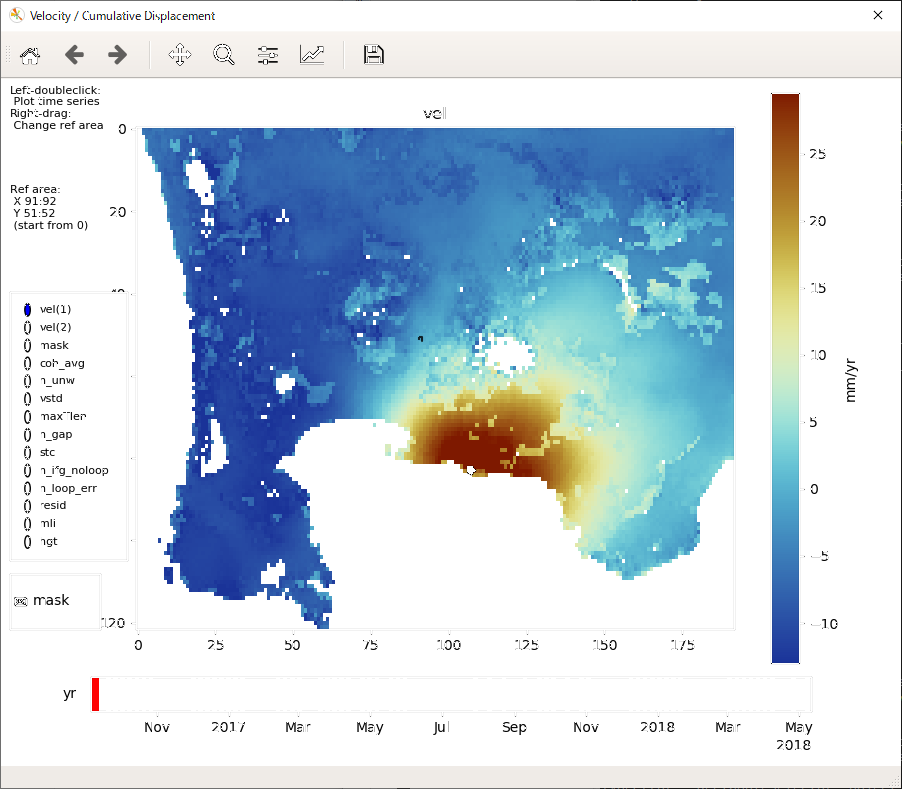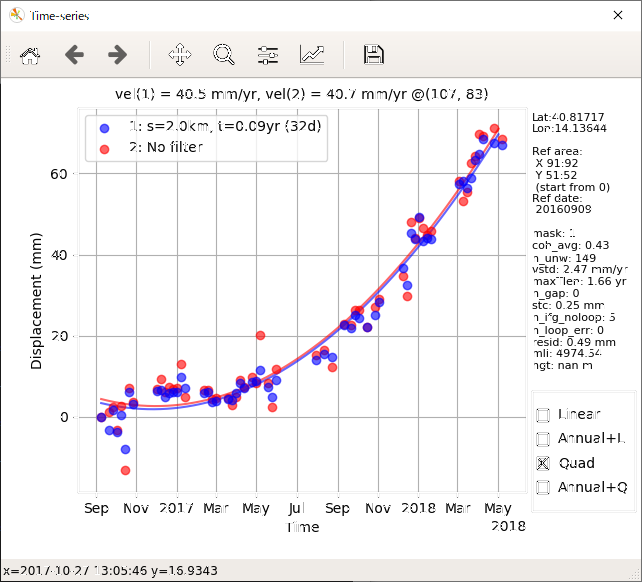-
Notifications
You must be signed in to change notification settings - Fork 110
2_0_workflow
Yu Morishita edited this page Sep 11, 2020
·
10 revisions
Make a working directory with the frame ID of interest and move, e.g.,
mkdir 124D_04854_171313
cd 124D_04854_171313Copy the batch script:
copy_batch_LiCSBAS.shthen edit the copied batch_LiCSBAS.sh , e.g., for Campi Flegrei from September 2016 to May 2018:
---Line33---
do05op_clip="y" # y/n
---Line38---
p05_clip_range_geo="14.03/14.22/40.78/40.90" # e.g. 130.11/131.12/34.34/34.6 (in deg)
---Line60-61---
p01_start_date="20160909" # default: 20141001
p01_end_date="20180508" # default: today
------
Run the batch script:
./batch_LiCSBAS.shthen all steps from 0-1 (downloading GeoTIFF files) to 1-6 (time series analysis) will run, and GEOC, GEOCml1, GEOCml1clip, TS_GEOCml1clip and log directories (~26 GB in total) will be created.
You can display the derived time series and velocity:
LiCSBAS_plot_ts.py -i TS_GEOCml1clip/cum_filt.h5 &

To improve the result, edit parameters in batch_LiCSBAS.sh and re-run it.

Details can be found in the following pages.